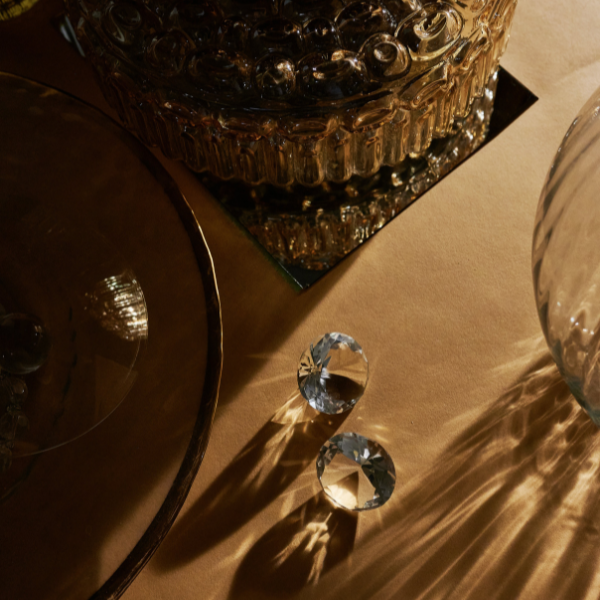In recent years, lab-grown diamonds have emerged as a fascinating alternative to diamonds mined from the Earth. These gems possess identical physical and chemical properties to natural diamonds, making them virtually indistinguishable.
However, many questions still linger:
Are lab-grown diamonds real?
What are the differences between natural and lab-grown diamonds?
This comparative analysis will explore these questions and the similarities and differences between these remarkable diamond varieties.
Are lab-grown diamonds real?
Let’s address the burning question first:
Are lab-grown diamonds real?
The answer is a resounding yes!
These are not simulated or imitation diamonds; they are genuine diamonds created in a controlled laboratory environment. Employing advanced technological processes, scientists can replicate the same natural processes deep within the Earth’s mantle, forming diamonds over millions of years.
These diamonds possess the same chemical composition and crystal structure as natural diamonds, leaving no room for doubt regarding their authenticity.

Lab-grown diamonds vs. real diamonds
Origins and formation
Natural diamonds are formed over millions of years deep within the Earth’s mantle under extreme pressure and heat. Volcanic activity and the slow movement of the Earth’s tectonic plates bring these precious gems closer to the surface, where they are eventually mined.
On the other hand, lab-grown diamonds are created through a process called Chemical Vapor Deposition (CVD) or High Pressure-High Temperature (HPHT).
In CVD, a small diamond seed is placed in a chamber containing carbon-rich gases, which then break down and deposit carbon atoms onto the seed, gradually growing a diamond.
In HPHT, a small diamond seed is exposed to high pressure and temperature, mimicking the natural conditions required for diamond formation. The diamond grows layer by layer, just as it does in nature.
Physical & chemical properties
Both diamonds share the same physical and chemical properties. They possess the same hardness (10 on the Mohs scale), brilliance, and durability.
Whether a diamond is natural or lab-grown, it will exhibit the same extraordinary sparkle and fire that has captivated us for centuries.
In terms of chemical composition, both types of diamonds are made up of carbon atoms arranged in a crystal lattice structure. This shared structure is what gives diamonds their exceptional strength and brilliance.

Quality & clarity
Diamond quality is assessed using the “Four Cs” – carat weight, color, clarity, and cut. Both of them adhere to the same grading standards.
The only difference lies in their origin.
Colorless diamonds are highly sought after, and both can achieve this coveted color grade. Similarly, both types can display various hues, from fancy yellow to blue, depending on impurities present during their formation.
When it comes to clarity, lab-grown diamonds can have fewer inclusions compared to natural diamonds. This is because they are created in a controlled environment, eliminating the possibility of mineral inclusions found in natural diamonds.
However, it’s important to note that both types of diamonds can exhibit different clarity levels, ranging from flawless to included.
Environmental impact & ethical considerations
One of the significant advantages of lab-grown diamonds is their reduced environmental impact. Traditional diamond mining involves extensive excavation and disruption of the Earth’s surface, potentially leading to deforestation, soil erosion, and water pollution.
In contrast, lab-grown diamonds are created in laboratories, requiring significantly fewer resources and leaving a smaller ecological footprint.
Ethical concerns have also plagued the diamond industry due to the potential presence of conflict or “blood” diamonds. Lab-grown diamonds, however, offer a clear advantage in this regard.
By eliminating the need for mining, they provide an ethical alternative for consumers who value responsible sourcing.
Takeaway
In this comparative analysis, we have explored the similarities and differences between lab-grown diamonds and natural diamonds.
Lab-grown diamonds are indeed real, possessing the same chemical composition, physical properties, and visual beauty as their natural counterparts. Both types of diamonds offer a wide range of color, clarity, and carat weight choices.
While the origins and environmental impact may differ, the decision between these two diamonds ultimately comes down to personal preference.
With lab-grown diamonds providing an ethical and environmentally friendly alternative, consumers can make an informed choice that aligns with their values.
As the world of diamonds continues to evolve, lab-grown diamonds have proven to be a remarkable addition, captivating jewelry enthusiasts with their authenticity, beauty, and positive impact.


